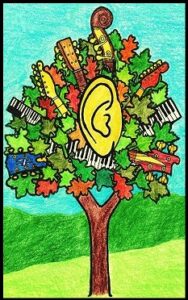 The Teaching Music series on the HoustonGuitar Blog is to help students navigate some of the obstacles to learning to play an instrument, especially guitar, piano and bass. Some of my advice is aimed at teachers and parents. I will outline a play-by-ear approach for beginners, starting with physical conditioning to get rid of the discomfort of playing. My approach to modern music is based on learning to play by ear, and applying ear-training and session training to learning chords and scales on the keyboard or fretboard.
The Teaching Music series on the HoustonGuitar Blog is to help students navigate some of the obstacles to learning to play an instrument, especially guitar, piano and bass. Some of my advice is aimed at teachers and parents. I will outline a play-by-ear approach for beginners, starting with physical conditioning to get rid of the discomfort of playing. My approach to modern music is based on learning to play by ear, and applying ear-training and session training to learning chords and scales on the keyboard or fretboard.
Classical/Modern Schools In this series, I divide music into the “classical school,” and the “modern school,” as in schools of thought. Both of these terms have other specific meanings. When I use the expressions “classical school,” or “modern school,” it’s just a shorthand for “schools of thought,” different ways of approaching music which are sometimes at odds with one another.
My critique of music teachers, music schools and methods is not directed at post-secondary music programs or music colleges.
As music teachers, it’s time to re-evaluate our methods and priorities in light of the fact that there are two separate schools of composition, and music education. Modern music should be taught in terms of the concepts and working styles of professional rock and country musicians. I’ll discuss misconceptions and biases in music education, redefining “musical literacy,” reading music by ear and how to develop your ear-reading skills, and teaching to the inner experience of playing music, and much more.
As a music teacher for more than twenty-five years, I’ve had a chance to see first-hand the reasons why so many music students don’t reach their goals, especially those who want to learn to play modern styles like rock, country, blues and jazz.
Many people quit music lessons because they’re frustrated with boring, reading-based methods. They’re searching for a way to relate to music intuitively. I hope to help students of modern music to avoid getting mired in traditional, classically-based methods which seem to never lead where they want to go. Where it comes to music education, you can’t pull a modern rabbit out of a classical hat. If you have tried and failed at music, then you should take another look, this time from a modern perspective.
The approach I outline starts with (1) physical conditioning to get rid of the discomfort of playing your instrument, (2) learning chord and scale shapes on the keyboard or fretboard, (3) learning note names on the keys or frets, (4) learning the scale degree system as it corresponds to note names, and the fretboard or keyboard, (5) learning to decipher melodies and chords by ear, and reproduce them on your instrument.
The first thing you notice is there’s no mention of staff notation. That’s because for modern musicians, reading staff notation is optional. In the production of most rock and country music, for instance, staff notation plays no part. The next post in this series will explain why it isn’t necessary to read music to play a musical instrument.
© 2019, 2020 by Gregory Varhaug